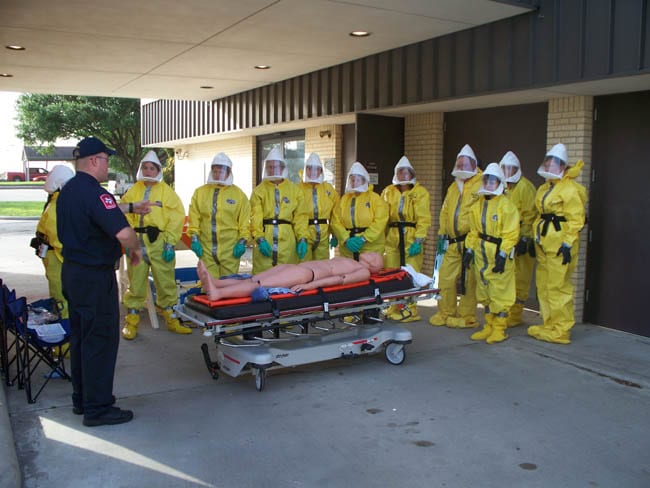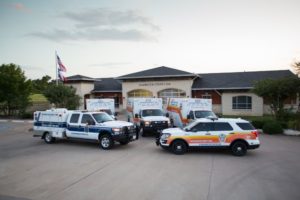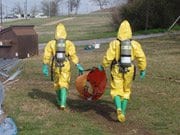Standards and Requirements
It’s important to clarify that the WCEMS Special Operation Division is not a “HAZMAT Team” by any stretch of the imagination. The Special operations rescue paramedics will maintain a minimum knowledge and competency of a hazmat technician level responder.
It is not the goal or intent of the team to work in the hot zone of a incident for any extended period of time. However, it may be required at times when assisting extrication or carrying for injuried patients. For this reason all NFPA minimum standards and OSHA guidelines wil be a minimum standard for the division. The over arching goal is to have a group of specially trained paramedics that can be better prepared to deal with the many concerns that a hazardous materials situation would bring to the response. The Hazmat Paramedics also do out reach community education to local hospitals and even region education in attemtps to bring more awareness and knowledge to proper decontamination procedures to the hospitals.

Team Response
Once the special operations team has been notified, they will respond to the scene of a WMD or Hazmat situations as a three person (minimum) team. They will dawn full Level-A protection until the chemical or toxin is defined. A minimum of the three (3) team members are required for a WMD response for adequate safety measures. The OSHA suggested “buddy system” will be utilized any time the special operations team members go into a “hot zone.”
has been notified, they will respond to the scene of a WMD or Hazmat situations as a three person (minimum) team. They will dawn full Level-A protection until the chemical or toxin is defined. A minimum of the three (3) team members are required for a WMD response for adequate safety measures. The OSHA suggested “buddy system” will be utilized any time the special operations team members go into a “hot zone.”
SPECOPS Initial Priority
 Initially the SPECOPS team priority will be to properly extricate down or injured victims inside the “hot zone” while simultaneously rendering aid (antidotes) BLS-ALS if necessary.
Initially the SPECOPS team priority will be to properly extricate down or injured victims inside the “hot zone” while simultaneously rendering aid (antidotes) BLS-ALS if necessary.
The Special Operations team when rescuing down or injured victims will attempt to follow these guidelines. The medical directors of WCEMS understand that special situations calls for special care and it’s understood that different treatment modalities may be utilized during these situations.
